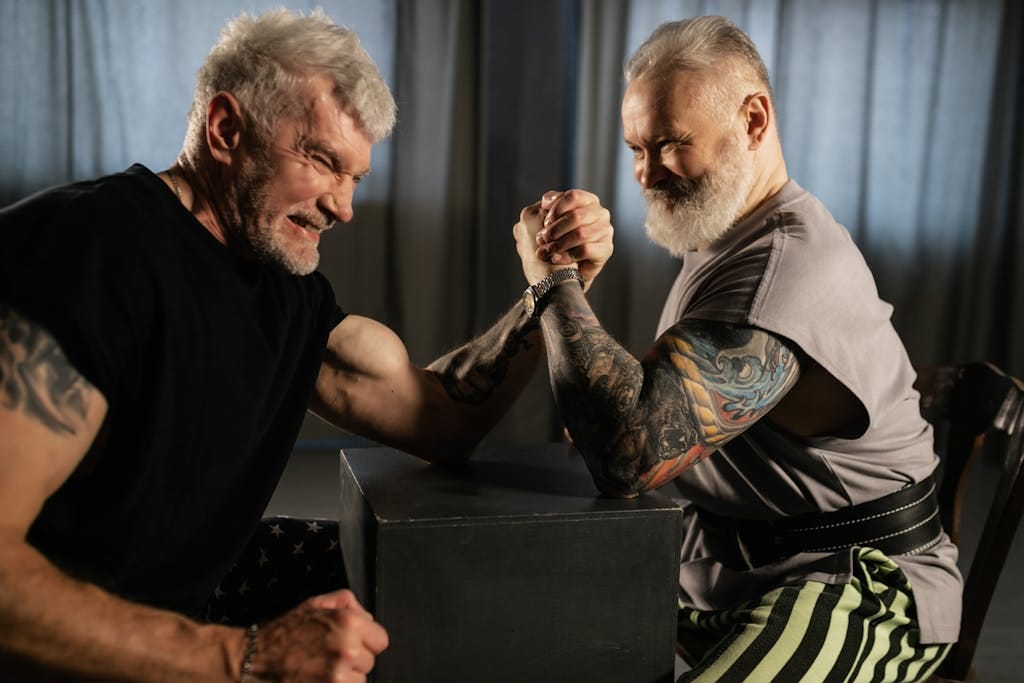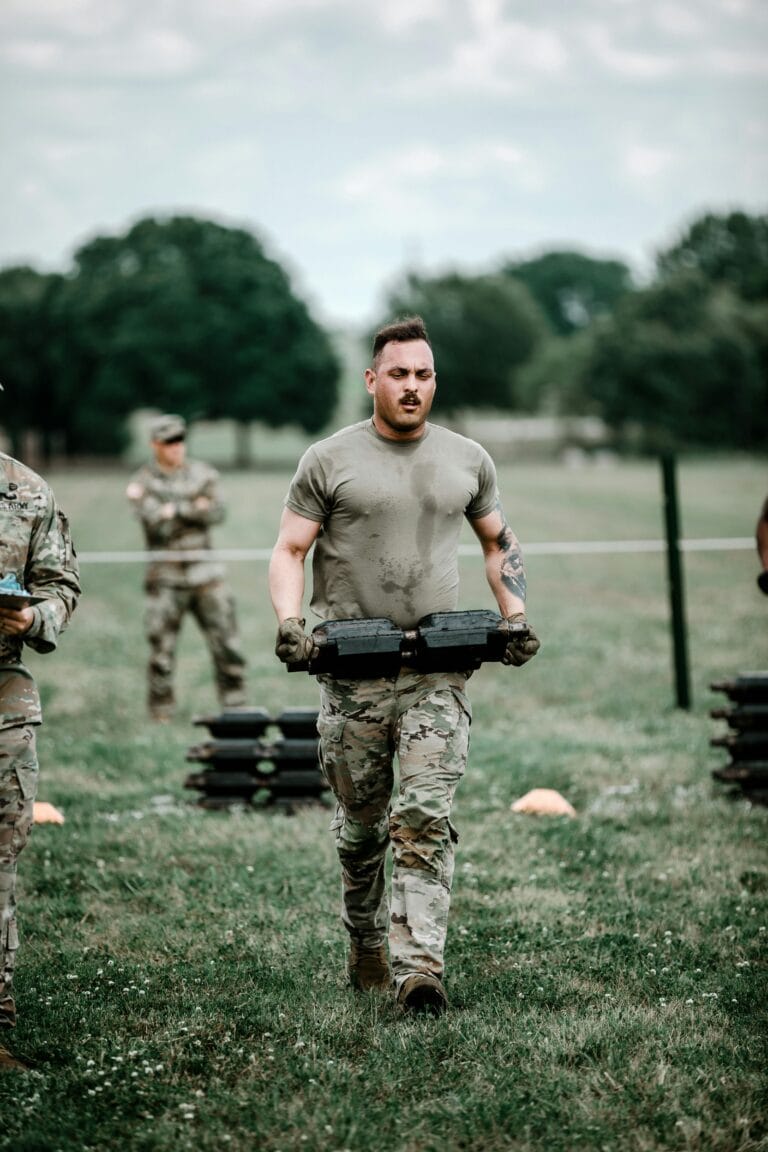FREE SHIPPING OVER $50
Can Creatine and Protein Help Seniors Who Don’t Work Out? The Answer Might Surprise You

The conversation around aging often includes a looming, unwelcome term: sarcopenia. This is the medical term for the age-related decline in skeletal muscle mass and strength, and it’s a silent threat to independence and quality of life. As we get older, our bodies become less efficient at building and maintaining muscle tissue, even if we are otherwise active. This natural process is one of the main reasons everyday tasks—from opening a jar to getting up from a chair—become challenging.
For many older adults, the thought of starting a rigorous weightlifting routine is simply out of the question due to joint issues, time constraints, or a general aversion to the gym. This raises a critical question: Can we find a nutritional shortcut? Specifically, can supplements like creatine and high-quality protein truly make a difference for seniors who aren’t actively hitting the gym? We’re going to dive into the current research, and what the scientific community has uncovered might fundamentally change the way you think about healthy aging and simple daily nutrition.
The Protein Puzzle: Why Older Bodies Need More
When you talk about muscle health, protein is the foundation. It provides the essential amino acids, which are the literal building blocks your body uses to repair and construct muscle tissue. However, aging introduces a phenomenon called “anabolic resistance.”
Anabolic Resistance: The Age-Related Challenge
Anabolic resistance refers to the phenomenon where an older muscle cell is less sensitive to the same amount of protein that would effectively stimulate muscle growth in a younger person. This crucial change means that the current Recommended Dietary Allowance (RDA) of 0.8 grams of protein per kilogram of body weight is likely too low for most seniors to effectively maintain their existing muscle mass, let alone build new tissue.
To overcome this resistance and adequately drive muscle protein synthesis (the process of building muscle), experts like the ProT-AGE Study Group recommend that healthy older adults target a daily intake of 1.0 to 1.2 grams of protein per kilogram of body weight. For someone weighing 150 pounds, that’s approximately 68 to 82 grams of protein every single day. This higher intake acts as a more powerful signal to the muscle, helping to slow the insidious march of sarcopenia.
The Power of Supplementation for Sedentary Seniors
If an older adult struggles to reach this higher threshold through diet alone—which is common due to reduced appetite, dental issues, or simply a habitual low-protein diet—a protein supplement becomes an extremely effective and convenient tool.
- Convenience: A scoop of whey or a plant-based protein powder mixed into a shake, oatmeal, or a cup of coffee is often easier to consume than a large steak or multiple servings of beans.
- Quality: Most supplements, particularly whey protein, contain high levels of the amino acid leucine, the key trigger for muscle protein synthesis. They provide a high-quality, bioavailable source of the necessary building blocks.
Crucially, research has shown that even in older adults who are not engaging in resistance training, increasing overall protein intake can help preserve lean body mass and reduce fat mass, although it may not significantly increase muscle strength without the stimulus of exercise. Essentially, you are feeding the muscle to prevent it from dissolving, even if you are not pushing it to grow.
Creatine Monohydrate: More Than Just a Gym Supplement
Creatine is one of the most widely studied supplements in the world, renowned for its ability to enhance performance for athletes. But its benefits extend far beyond the weight room, making it a compelling consideration for healthy aging and longevity.
What Creatine Actually Does in the Body
Creatine is a compound your body naturally produces, storing about 95% of it in your muscles. It plays a foundational role in cellular energy production, particularly in tissues with high energy demands like muscles and the brain. It acts as a quick reserve—a backup battery—to regenerate ATP (adenosine triphosphate), which is the primary energy currency of the cell.
In a muscle context, this means faster, more powerful contractions. In the context of a non-exercising senior, the mechanism shifts slightly, offering two powerful benefits:
- Increased Muscle Water Content: Creatine draws water into the muscle cells. This process, known as cell volumization, is anabolic, meaning it creates an environment conducive to growth and repair. Even without the mechanical stress of lifting weights, this cellular signal helps maintain muscle integrity.
- Anti-Catabolic Effects: By stabilizing cellular energy and promoting a more hydrated muscle environment, creatine helps muscles resist breakdown, a process known as catabolism. It acts as a kind of cellular armor, helping your existing muscle fibers survive better over time.
Creatine Alone: Is the Effect Significant for Non-Exercisers?
Here is where the scientific answer gets surprisingly optimistic, though with an asterisk. While most studies demonstrating significant strength gains use creatine in combination with resistance training, emerging research suggests that creatine supplementation alone does offer measurable benefits for sedentary or minimally active older adults.
Multiple meta-analyses indicate that daily creatine supplementation can:
- Increase Lean Body Mass: Studies consistently find that creatine helps older individuals maintain or slightly increase their lean muscle mass, even without a formal workout program. This gain is partly due to water retention, but it signifies a healthier muscle environment.
- Improve Functional Performance: More importantly, some studies show improvements in markers of functional ability, such as grip strength, chair-rise tests, and overall physical capacity—all critical factors for maintaining independence and reducing the risk of falls. The slight boost in muscle energy helps you execute daily movements with less effort.
The Unsuspected Benefit: Creatine for Cognitive Health
The long-term effects of sarcopenia don’t stop at physical frailty; low muscle mass is also linked to accelerated cognitive decline. Since the brain is one of the most energy-intensive organs, the way creatine supports energy production has a compelling secondary application for older adults.
A small, but growing body of research suggests that creatine may play a role in supporting brain health, particularly when the brain is under stress or when baseline creatine levels are low (as is common in older vegetarians). By helping the brain manage its energy supply, creatine can positively impact:
- Memory Function: Some trials suggest improvements in short-term memory and memory recall in older individuals who supplement with creatine.
- Processing Speed: Creatine may help enhance the speed at which the brain processes information.
- Sustained Attention: This benefit is often observed in people who are sleep-deprived or highly stressed, but it points to a general role in maintaining cognitive endurance—a vital skill as we age.
When an older adult takes creatine, they are potentially not just supporting their physical independence, but also their mental sharpness, making it a powerful two-in-one supplement for comprehensive longevity.
The Combined Strategy: Synergistic Power
The optimal strategy for a sedentary senior involves tackling sarcopenia from both angles simultaneously. You need the building blocks and the cellular fuel.
- Protein as the Building Blocks: Ensuring a high daily protein intake (1.0 to 1.2 grams/kg of body weight) provides the raw materials required to repair and sustain muscle tissue, overriding the anabolic resistance of aging muscle.
- Creatine as the Foundation & Fuel: Creatine then works in the background to improve the muscle cell environment, resisting catabolism and providing the quick energy reserve needed for all movement, whether it’s a strenuous walk or simply getting out of bed.
The truth is, even if you classify it as “not working out,” you still use your muscles every single day. You lift groceries, climb stairs, and maintain posture. This daily, low-level activity is much more effective when your muscles are primed with high-quality protein and cellular energy from creatine.
Safety and Practical Guidance
You should always consult with your physician before starting any new supplement regimen, especially if you have pre-existing kidney conditions. However, the scientific literature overwhelmingly supports the safety of standard creatine and protein doses for healthy older adults.
- Creatine Monohydrate Safety: Studies confirm that long-term use of creatine at standard doses (typically 3 to 5 grams per day) does not negatively affect kidney or liver function in healthy individuals. The main side effects are usually mild gastrointestinal upset or temporary water weight gain, often mitigated by staying well-hydrated.
- Protein Safety: Consuming protein up to 1.5 grams per kilogram of body weight is considered safe for healthy seniors. The main goal is to ensure you are selecting high-quality sources, like whey, casein, or quality plant proteins, and distributing them evenly throughout the day to maximize the anabolic signal.
A simple, effective habit is to mix 3 to 5 grams of unflavored creatine monohydrate into your morning protein shake. This ensures consistent intake, turning what might have been a nutritional deficiency into a powerful daily tool for preserving muscle and promoting a strong, independent future.
Conclusion
The initial question—Can creatine and protein help seniors who don’t work out?—has a resounding, yet nuanced, answer: Yes, they absolutely can, and the effects are vital. While supplements are never a substitute for the enormous benefits of resistance exercise, they provide essential nutritional support that directly combats sarcopenia, a condition no one can outrun with diet alone.
For seniors who cannot or will not lift weights, consistently supplementing with a higher protein intake and a daily dose of creatine serves as a crucial line of defense. They protect existing muscle, improve physical function, and even contribute to cognitive resilience, all of which are cornerstones of a long, independent life. You don’t need to be an athlete to benefit from these tools; you just need to be committed to preserving your strength.
Related Articles
- Warning for Women Over 50: The 1 Common Supplement That Accelerates Bone Loss, Says Geriatrician
- New Hope for Alzheimer’s? This Popular Supplement Shows Surprising Promise in Latest Study
- Think Collagen Is Just Hype? These Skin, Hair, and Joint Results Say Otherwise
- I Took Tru Niagen for 30 Days—The Energy, Sleep, and Brain Changes Shocked Me
- The Menopause Sleep Mineral: 90% of Women Are Deficient in the Magnesium That Stops Night Sweats



